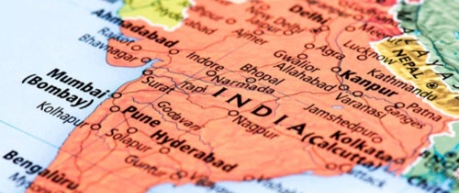Tuesday 8th May 2018, 12:00pm
Changes to how India sources its food supplies could help the country avoid severe dietary shortages in decades to come, research suggests.
India’s self-sufficiency model for securing food, which relies on
increases in domestic crop yield and reduction of waste will be
insufficient to meet nutritional needs in the future, the results
indicate.

A combined approach of optimising domestic production and increasing
global trade links could enable India to meet the United Nations
Sustainable Development Goal of zero hunger by 2030, the study found.
A nationwide programme to optimise crop selection is needed to maximise the production and supply of dietary energy, protein and micronutrients, they suggest.
India may also need to increase its international agricultural trade and lift restrictions on food imports to diversify, improve and safeguard food supplies, researchers add.
Researchers analysed the domestic capacity of India’s food system and made projections for 2030 and 2050. The research maps the entire Indian food system for the first time, from crop production to household-level availability, studying levels of calories, protein, fat and micronutrients.
Researchers found that an increase in population coupled with environmental and dietary pressures could lead to nutritional shortages across 60 per cent of the Indian population.
It is estimated that more than two billion people globally suffer from micronutrient deficiencies, and nearly half of them live in India. Also known as hidden hunger, deficiency occurs when the intake of essential vitamins and minerals falls below levels needed for children to develop and adults to function. The health and productivity costs of micronutrient deficiencies could also result in severe economic losses totalling 2.4 per cent of India’s gross domestic product.
India is already one of the most at-risk nations for climate change impacts, water scarcity and declining soil fertility as a result of land degradation. Improvements in crop yields alone would fail to keep pace with population growth by 2030, researchers found.
Studies suggests that India will need to diversify its traditional forms of food production in order to address the availability of all nutrients necessary for adequate nourishment.
"Our analysis suggests that India’s current agricultural policies will be insufficient to fully address malnutrition. To meet the UN goal of zero hunger by 2030, India will need to adopt intervention strategies that encourage dietary diversification and boost micronutrient availability. The country will need to further develop food processing and fortification methods but domestic production alone will be insufficient to close the nutritional gap. Therefore India will also need to increase its levels of global trade."
Hannah Ritchie, School of Geosciences, the University of Edinburgh